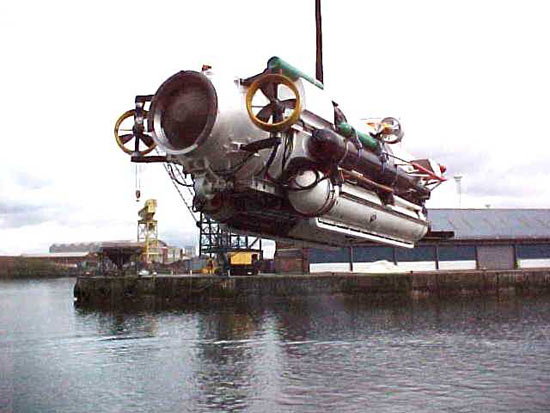
Welcome to MSW’s Scuttlebutt! Here’s the news for the day.

Feature - USS San Francisco
MSW crew-mate David J. Salvin (djandj) shares a fine gallery of images, along with his build story of the heavy cruiser USS San Francisco in this "Build" feature.

Successful Submarine Escape And Rescue Exercise Completed Off the West coast
Source: Australian Department of Defense
The Royal Australian Navy (RAN) has completed a successful personnel transfer from the submarine HMAS Waller, while it sat on the seabed off the West Australian coast.
The exercise of submarine escape and rescue is a requirement of the RAN’s submarine safety system and demonstrates that the procedures and equipment are in place to rescue personnel in the event of a submarine incident.
The method of submarine escape exercised as part of Exercise Black Carillon involves personnel transferring from a bottomed submarine into the James Fisher Submarine Rescue Vehicle, LR5, for transportation to the surface.

Upon surfacing, personnel were tended to onboard the Australian rescue ship, Seahorse Standard, with specialised RAN medical teams and equipment embarked.
“Black Carillon is an extraordinarily valuable opportunity to exercise our submarine escape and rescue capability,” said Commander Submarine Force, Captain Brett Sampson.
“The successful completion of the submarine escape as part of Exercise Black Carillon has demonstrated that the RAN is well equipped to take action to rescue submariners in the unlikely event of a submarine incident.”
Black Carillon is the twelfth in a series of RAN submarine escape and rescue exercises designed to demonstrate RAN submarine rescue capability. The RAN uses annual Black Carillon exercises to train and demonstrate this ability.
Two of the Best - Dauntless and Astute on Sea Trials
Source: BAE Systems
GLASGOW, United Kingdom --- Two of the most advanced naval vessels in the world met for the first time this week, as Dauntless, the second of the Royal Navy’s Type 45 destroyers, and Astute, the first of class Astute nuclear powered attack submarine, combined on sea trials in the firth of Clyde.
Astute is the most advanced attack submarine ever supplied to the Royal Navy, incorporating the latest stealth technology combined with a world class sonar system, an improved capability for world-wide operations, much greater firepower, better communications and crew accommodation than in-service submarines.
Astute is designed to fulfil a range of key strategic and tactical roles including anti-ship and anti-submarine operations, surveillance and intelligence gathering and support for land forces. Displacing 7,400 tonnes and measuring 97 metres from bow to propulsor, Astute is significantly larger than the Swiftsure and Trafalgar class submarines that she will replace but requires fewer crew to operate her due to the advanced technology and automated systems on board.
The Type 45 anti-air warfare destroyers are the most advanced ships of their kind in the world today. With a primary role to defend a task force from any aerial attack, they are extremely flexible and can provide a wide range of capability ranging from humanitarian relief through to intense war fighting.
Dauntless was handed over to the Ministry of Defence by BAE Systems in December 2009 and will be commissioned into the Royal Navy fleet later this year. Astute arrived at her operational base of Faslane Naval Base on the Clyde from BAE Systems’ Barrow yard in November 2009 and is currently undergoing sea trials ahead of her acceptance into service.

LR5 Submersible Submarine Rescue Vessel
Today’s website is LR5 Submersible Submarine Rescue Vessel. Enjoy.
This Day in U.S. Naval History
1813 - USS Essex takes the Peruvian corsair ship Nereyda, marking the first capture by the Navy in the Pacific.
1898 - Assistant Secretary of the Navy Theodore Roosevelt proposes the Navy investigates the military application of Samuel Langley's flying machine, beginning naval aviation.
1915 - F-4 (SS 23) becomes the first American submarine casualty, sinking off the coast of Honolulu.
Photo of the Day

Amphibious assault vehicles assigned to the 31st Marine Expeditionary Unit (31st MEU) debark the well deck of the amphibious assault ship USS Essex (LHD 2).
Gator











